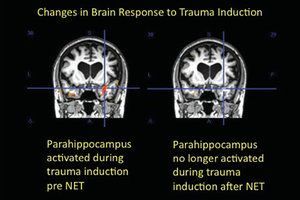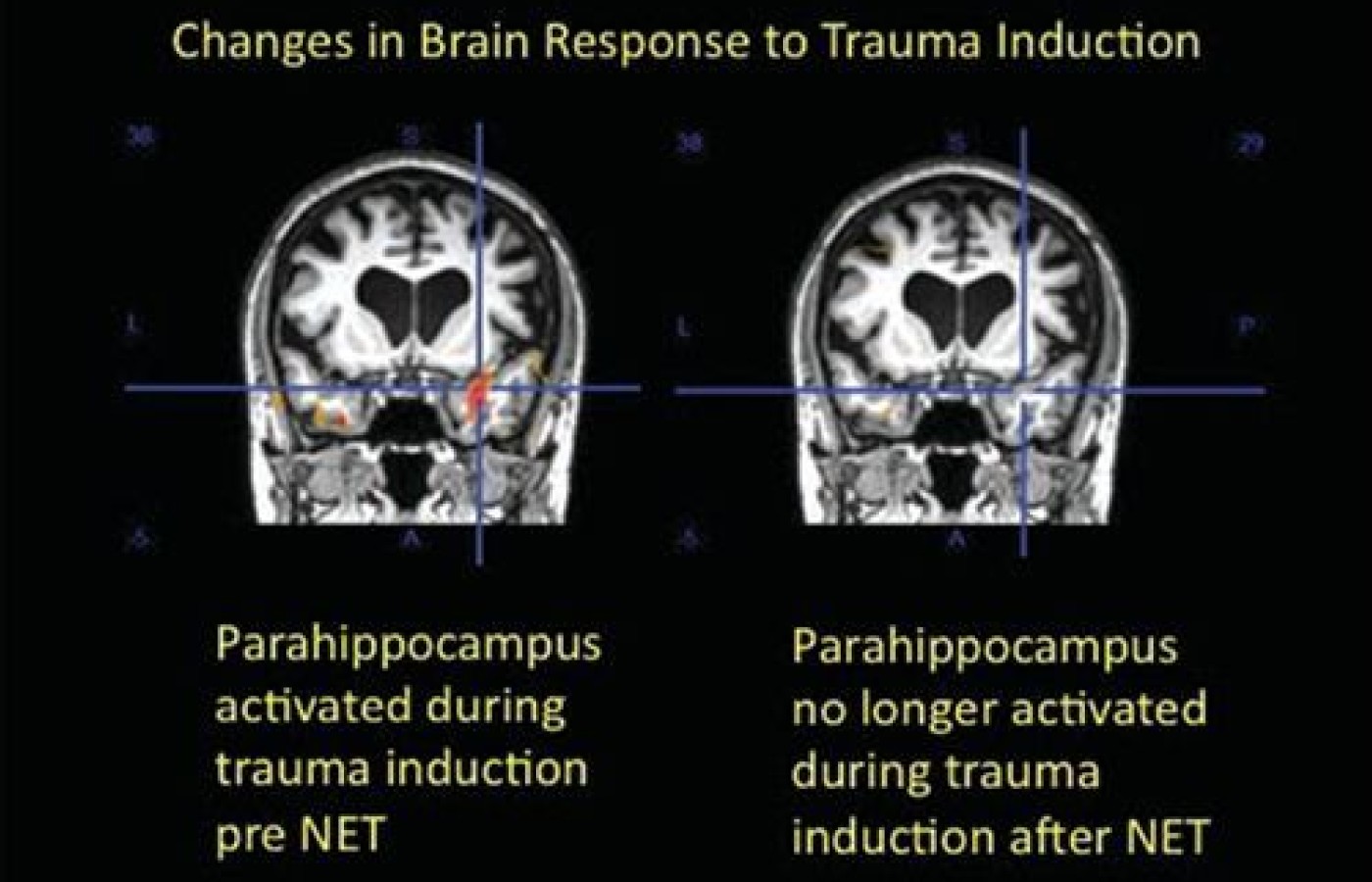Recent laws in New Jersey and California represent a disturbing trend that will negatively impact a practice’s ability to collect monies from patients, as well as expose them to significant penalties if the practice does not follow the mandatory guidelines to a T. Please be aware that a similar law may be coming to your state. The time to act is before the law is passed.
Emotions as a Gateway to Improvement: The Research
Author's note: The rising tide of both research and public awareness in stress-related issues understandably points our attention to the brain and central nervous system. Accordingly, it is of special interest to the chiropractic profession to be aware of the interconnectedness of the musculoskeletal, immune and hormonal systems, among others. While orthopedically oriented chiropractors have made great strides in addressing the musculoskeletal system, many of their colleagues have at the same time been successfully addressing and utilizing brain, mind, emotional and immunological mind-body connections through a variety of approaches and techniques. Most often, these concepts have been applied to augment the musculoskeletal techniques by specifically addressing the chronic recurring vertebral subluxation. How are all these systems interconnected? The answer might be like the air we breathe, so pervasive it sometimes goes unnoticed. The answer is emotions. All of these non-orthopedic chiropractic techniques eventually interface with the emotions. This series of articles (of which this is the fifth) elucidates these vital connections.
"When emotions are expressed ... all systems are united and made whole. When emotions are repressed, denied, not allowed to be whatever they may be, our network pathways get blocked, stopping the flow of the vital feel good, unifying chemicals that run both our biology and our behavior."
This message from the renowned neuroscientist Candace Pert1 is a clarion call to arms: We should consider health care interventions that offer the possibility of unblocking these pathways so pain experiences which resisted previous treatments might yet be extinguished. The key to this unblocking would be allowing repressed emotions to be physiologically expressed. Such a possibility is offered by Neuro Emotional Technique (NET), introduced in my previous article.
Unlocking Blocked Flow
The overlying objective of the mind-body approach undertaken by NET has been to normalize a physiological imbalance caused by an emotional trauma that could not be resolved because of a neurological or meridian deficit. In broad terms, NET employs a body entry such as a chronically recurring subluxation, coupled with the practitioner's guidance of the patient into accessing and then holding a feeling that is coupled with a change of muscle function.

An early indication that NET's addressing of emotions could unlock Pert's blocked flow of the "vital, feel good, unifying chemicals" came from Peter Bablis' case studies of two patients who were beset with hypothyroidism. The treating practitioner attempted to locate the thyroid dysfunction by means of muscle testing.
In specific terms, testing the teres minor muscle in the upper extremity provided a weak response, until becoming strong when the practitioner contacted a reciprocally specific meridian access point. This cycle was repeated by assessing an emotion associated with thyroid dysfunction (muddled thinking, feelings of loss and vulnerability, instability, paranoia, and anxiety). This was done by offering graded steps to encourage the patient to access those emotions which, when contemplated, pointed toward the dysfunctional meridian.2
The concept found to be most significant and uppermost in the patient's mind was identified by the previously strong teres muscle test turning weak. Treatment then consisted of having the patient hold the meridian access point and holding the prefrontal area of the cranium while the practitioner provided a somatic stimulus to the spinal segment (in this instance, an instrumental adjustment posterior to anterior applied along the facet plane of C1, C4,and C7) associated with the meridian.
Retesting the meridian entry point demonstrated that the muscle tested strong after challenge. In both patients, energy levels returned to normal with TSH levels approaching normal values.3
Further support came from the successful NET treatments of two additional hypothyroid patients five years later.4 Yet additional symptom resolution following NET applications was evident in three cases of anovulation infertility,5 one case of separation anxiety disorder,6 seven cases of spider phobia,7 and seven cases in which 5/7 elite rowers demonstrated improved performance.8
Additional Robust Research
More robust experimental evidence began to accumulate in 2008 when Bablis sequentially allocated 60 participates with chronic cervical pain into groups receiving either an active or sham NET protocol. Measurements of visual analog scale and pressure algometer recordings of four trigger-point locations displayed significant improvement compared to the control group.
Specifically, the improvements on the Visual Analog Scale registered 7.1-7.6 across the four trigger points (suboccipital region, levator scapulae region, sternocleidomasteoid region and temporomandibular region) in the NET-treated cohort, while changes of 0-0.1 were found in the control group.9
Jensen demonstrated, using a sit-and-reach (SR) test, that in 45 participants in a randomized, controlled trial, NET subjects compared to an active control group (stretching instruction) and a passive control cohort (no instruction or intervention) showed statistically superior flexibility after 40 minutes of experimentation. Mean changes in the SR scores were +3.1 cm in the NET group, +1.2 cm in the active control group and +1.0 cm in the passive control participants.10
Following the protocol of a randomized, controlled trial that had been published previously,11 Karpouzis and her colleagues performed a randomized, controlled trial of 41 children ages 5-12 diagnosed with attention deficit hyperactivity disease (ADHD). Participants were divided into groups receiving NET, a placebo or no treatment.
An intention-to-treat analysis indicated that NET therapy produced significant results in all primary and secondary results; specifically the Conners ADHD Index, Conners Global Index, and the Inattentive, Hyperactive/Impulsive, and overall scales of the Diagnostic and Statistical Manual of Mental Disorders. Essentially, the emotional component of NET therapy delivered clinically meaningful and significant improvements to children with ADHD.12
But the most exciting demonstration that emotions, NET and neural pathways are intimately connected emerged from a team of researchers at Thomas Jefferson University in Philadelphia, under the direction of Daniel Monti. Focusing on 23 cancer patients who had cancer-related experiences that produced traumatic stress, the investigators took functional MRI images on all patients while listening to the accounts of their distressing cancer memories before and after receiving NET or a sham treatment.
After four or five brief sessions, only those patients who received NET reported much less distress with an overall improvement of their emotional state. At the same time, the fMRI brain images showed connectivity changes between the cerebellum and limbic structures, as well as the brain stem, approaching normal patterns. Specifically, the parahippocampus, which had been activated previous to the NET treatments, was no longer activated following the NET sessions.
Essentially, this observation established a neurological signature of the effect of an NET intervention and linked emotion to the regulation of the autonomic nervous system.13 This was the first time an intervention could be shown to change the neurophysiology of cancer patients with elevated levels of associated stress. It was also the first time an intervention could be shown to change interconnectivity within the brain as it relates to the cerebellum.14
A Compelling Voice
In all of these examples, by tapping into a memory that produced a state of stress and fatigue similar to the present symptom, the practitioner attempted to link past and present by determining how and why recent events exacerbated what was termed a conditioned response created by the first trauma. Extinction to the specific stimulus had not yet occurred and appears to have been associated with somatic dysfunction.
In NET, the conscious feedback of the psychosomatic connection has been able to sever the link to what has appeared in the literature to be a wide assortment of physical and mental dysfunctions. In this manner, NET has raised a compelling voice as to why it may be considered to be an adjunctive procedure, not only in the management of multiple conditions, but also perhaps in the promotion of optimal health.
Editor's Note: The final article in this series will detail the aspects of the mind-body connection as it relates to patient management and chiropractic in particular. It will also describe the background of the nonprofit foundation responsible for the support and promotion of research in this domain.
References
- Pert C. The Molecules of Emotion: Why We Feel the Way We Feel. New York, NY: Scribner, 1997.
- Walker S. Neuro Emotional Technique seminar manual. Encinitas, Calif., 2006.
- Bablis P, Pollard H. Hypothyroidism: a new model for conservative management in two cases. Chiro J Australia, 2004;34:11.
- Bablis P, Pollard H. A mind–body treatment for hypothyroid dysfunction: a report of two cases. Complement Ther Clin Pract, 2009;15:67-71.
- Bablis P, Pollard H, Monti DA. Resolution of anovulation infertility using neuro emotional technique: a report of 3 cases. J Chiropr Med, 2006;5:13-21.
- Karpouzis F, Pollard H, Bonello R. Separation anxiety disorder in a 13-year-old boy managed by the Neuro Emotional Technique as a biopsychosocial intervention. J Chiropr Med, 2008;7:101-6.
- Jensen AM, Ramasamy A. Treating spider phobia using Neuro Emotional Technique: findings from a pilot study. J Altern Complement Med, 2009;15:1363-74.
- Jensen AM. The use of Neuro Emotional Technique with competitive rowers: a case series. J Chiropr Med, 2011;10:111-7.
- Bablis P, Pollard H, Bonello R. Neuro Emotional Technique for the treatment of trigger point sensitivity in chronic neck pain sufferers: a controlled clinical trial. Chiropr Osteopathy, 2008;16:4.
- Jensen AM, Ramasamy A, Hall MW. Improving general flexibility with a mind-body approach: a randomized, controlled trial using Neuro Emotional Technique(R). J Strength Cond Res, 2012;26:2103-12.
- Karpouzis F, Pollard H, Bonello R. A randomised controlled trial of the Neuro Emotional Technique (NET) for childhood Attention Deficit Hyperactivity Disorder (ADHD): a protocol. Trials, 2009;10:6.
- Karpouzis F, Bonello R, Pollard HP. Final data of the effects of the Neuro Emotional Technique (NET) for pediatric Attention-Deficit/Hyperactivity Disorder (AD/HD): a randomized trial. World Federation of Chiropractic 11th Biennial Congress, Rio de Janeiro, Brazil, 2011.
- Monti DA, Tobia A, Stoner M, et al. Neuro Emotional Technique effects on brain physiology in cancer patients with traumatic stress symptoms: preliminary findings. J Cancer Surviv, 2017;11:438-46.
- Monti D. "What Has the New Science Revealed?" https://vimeo.com/307335695



